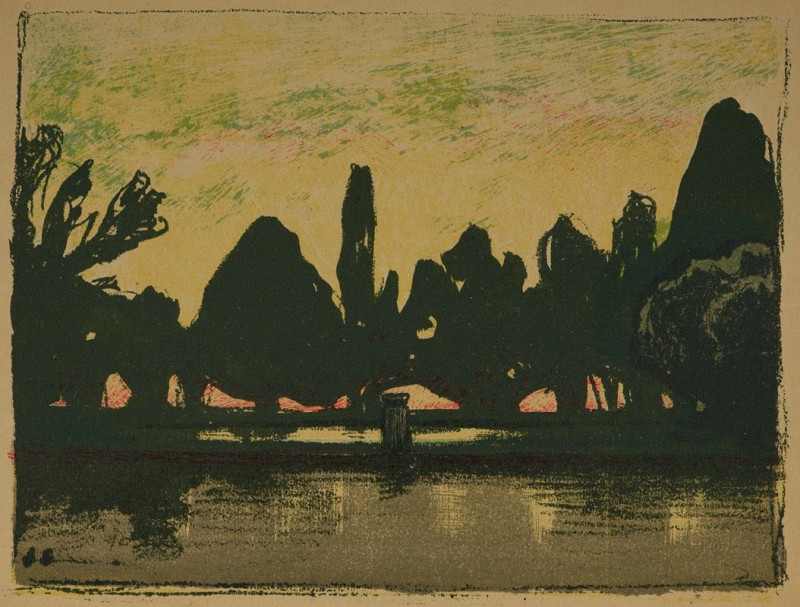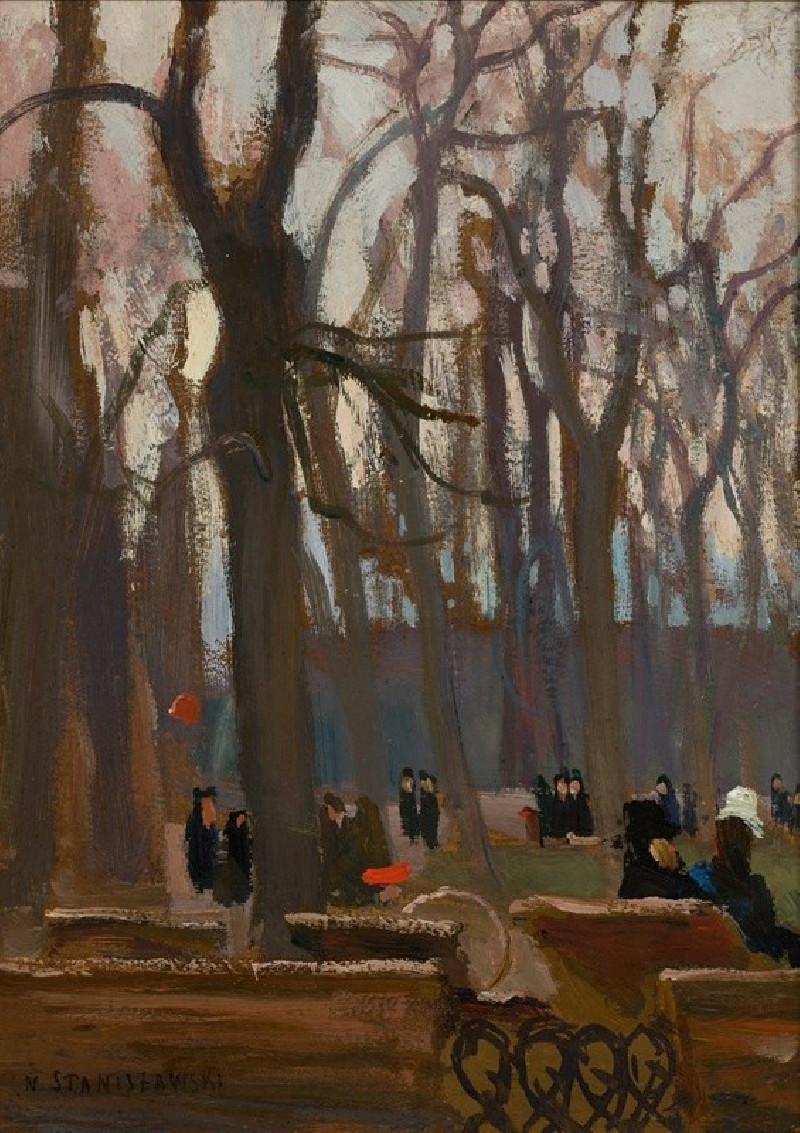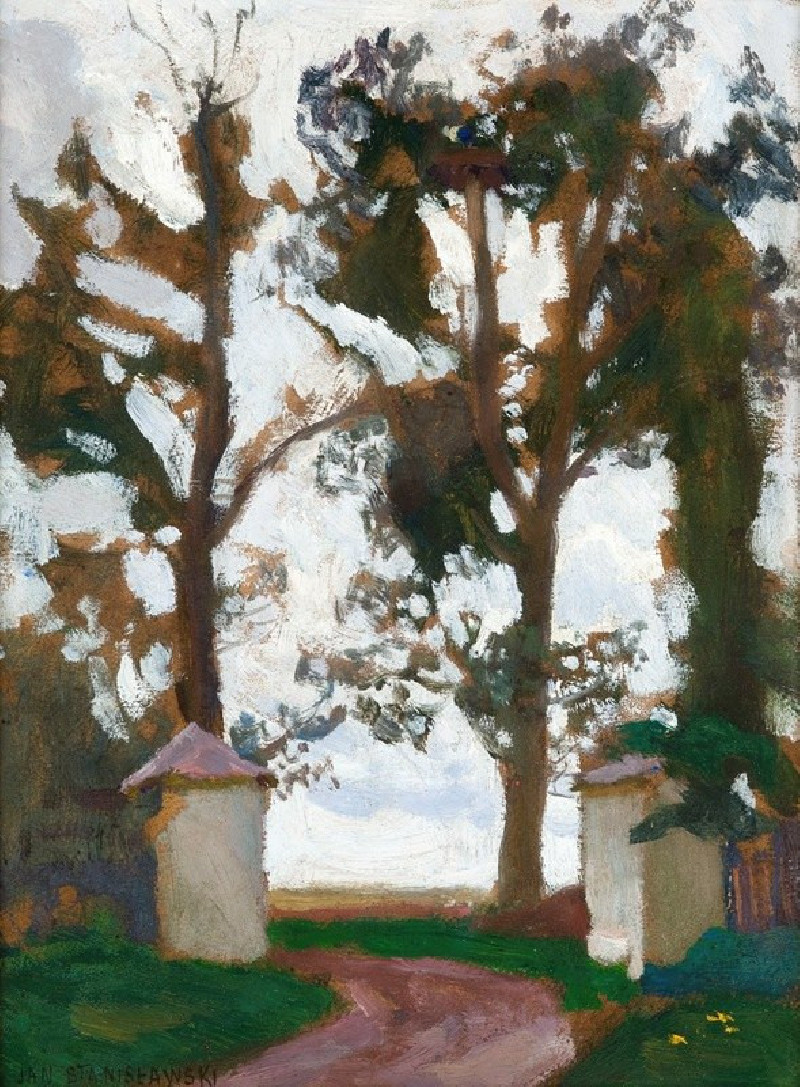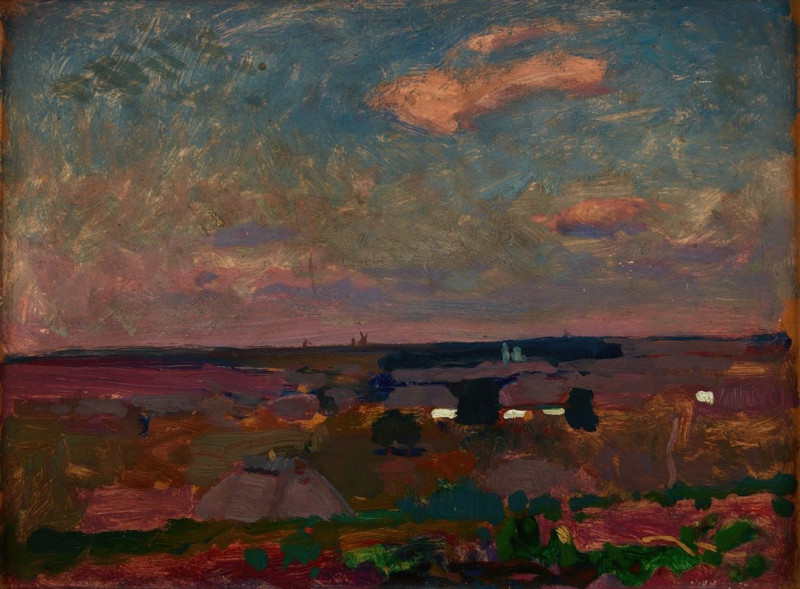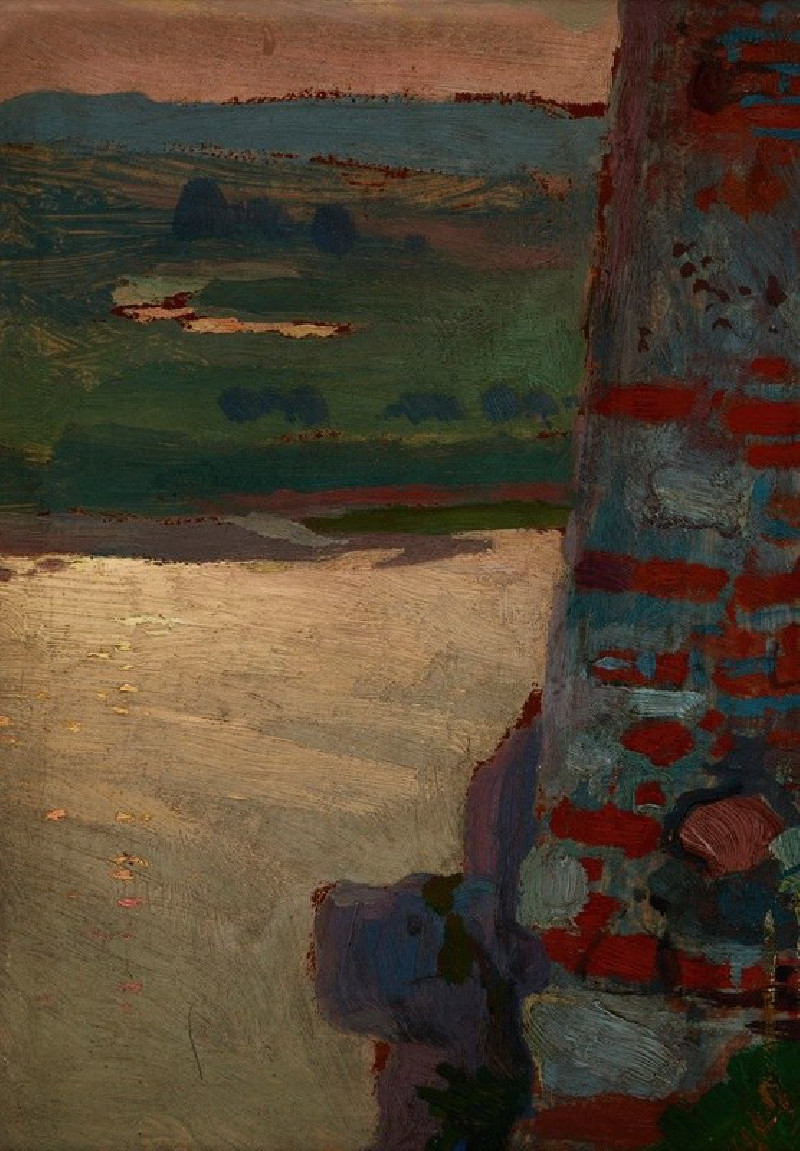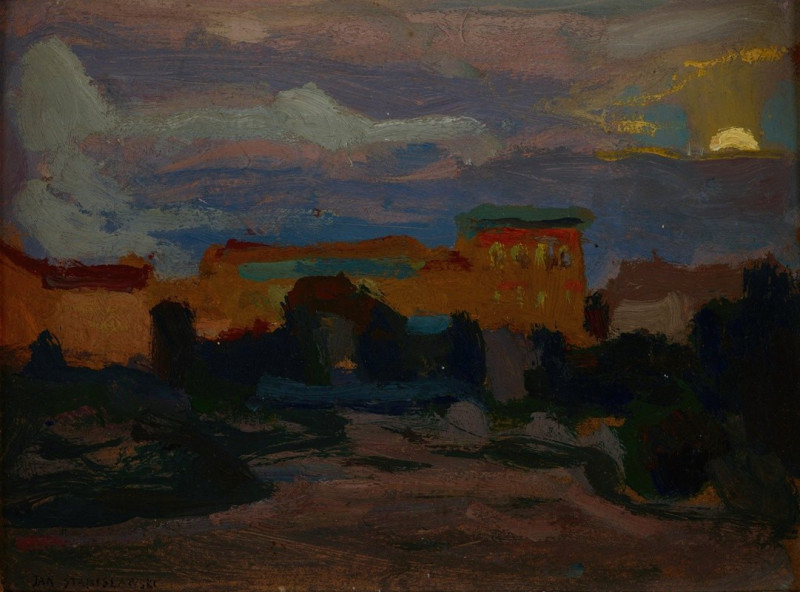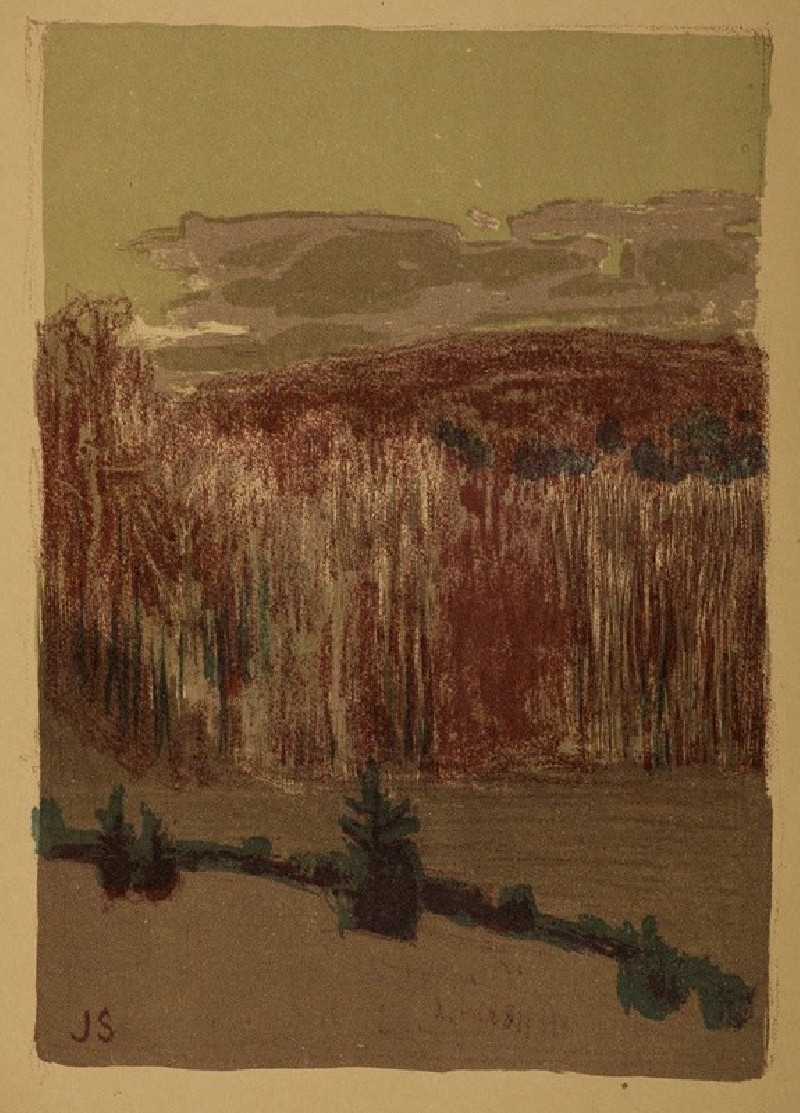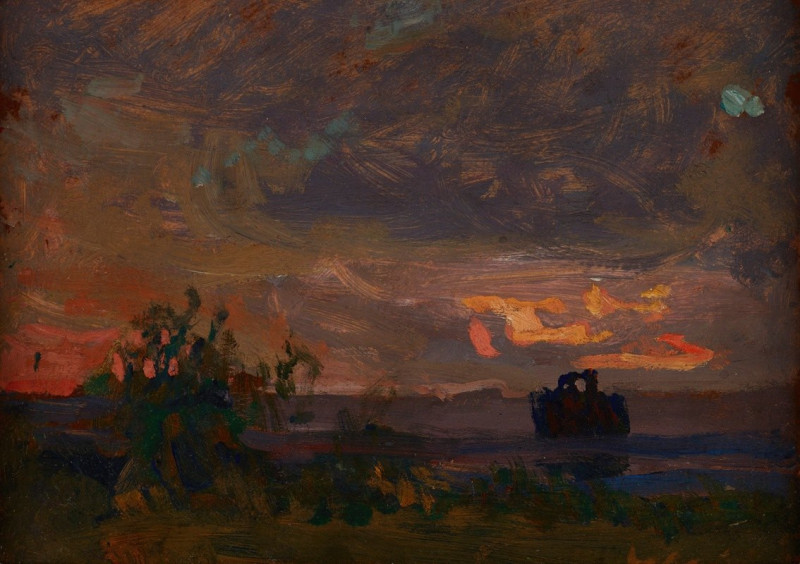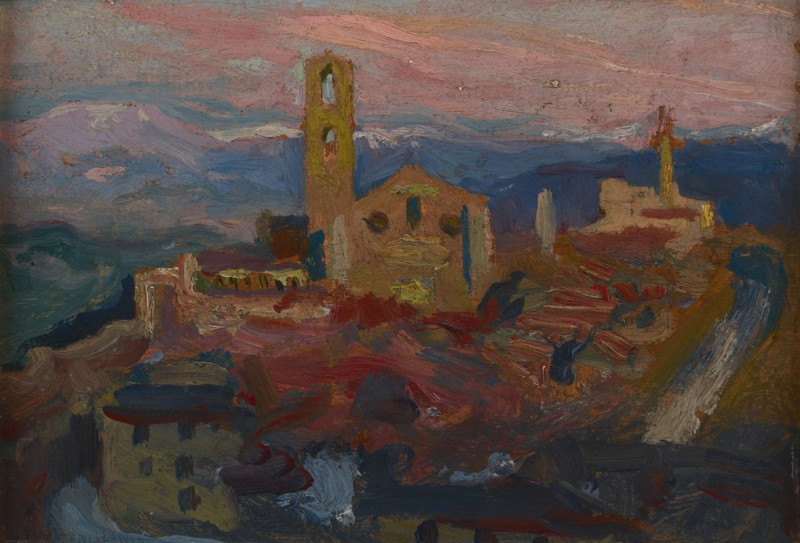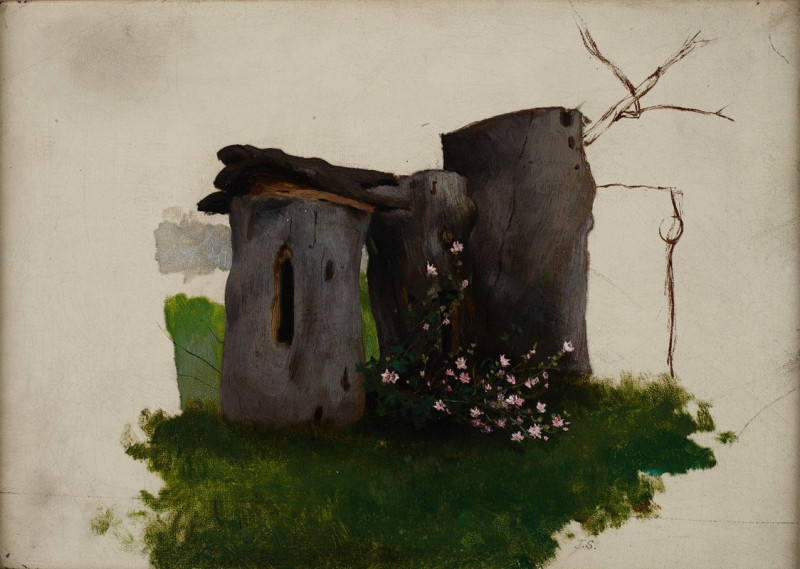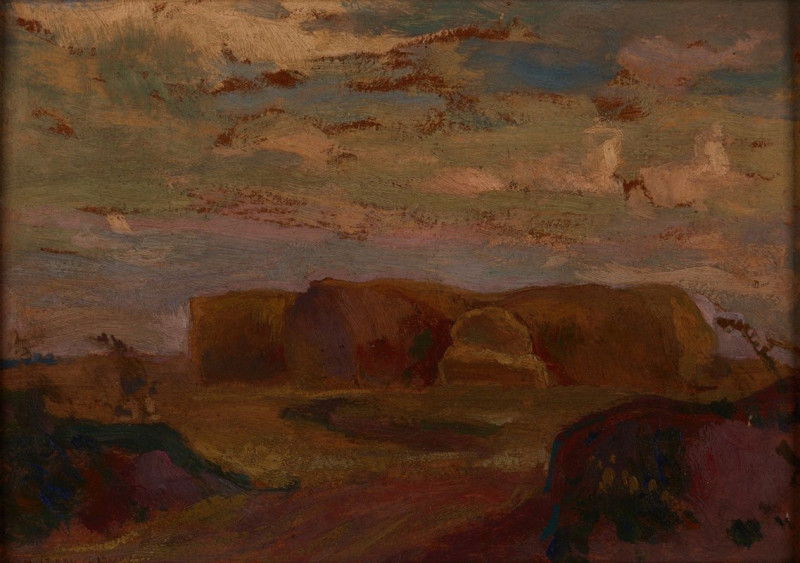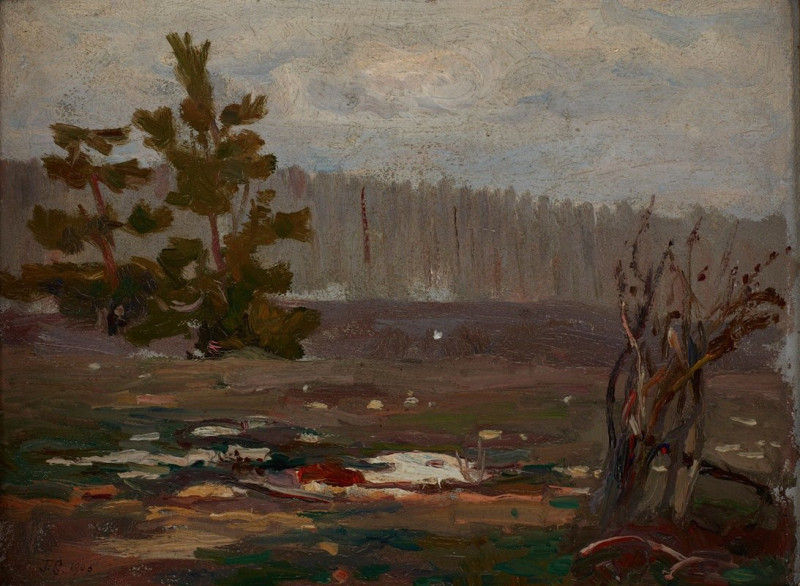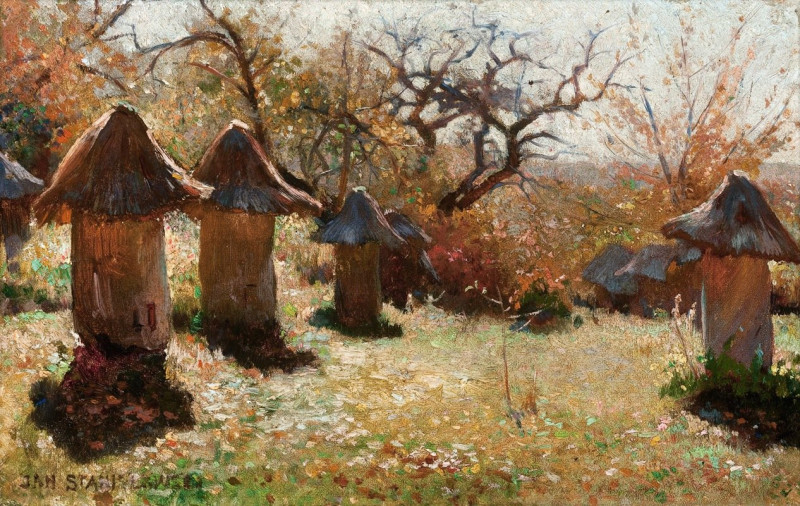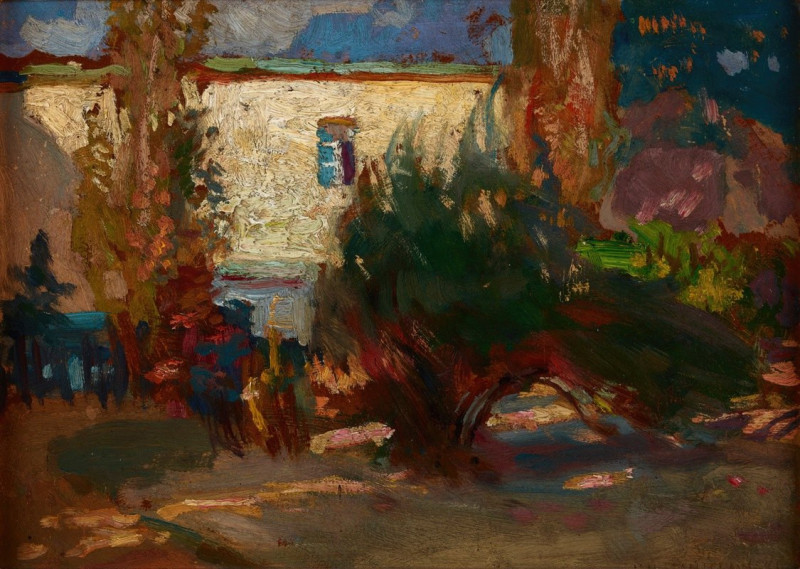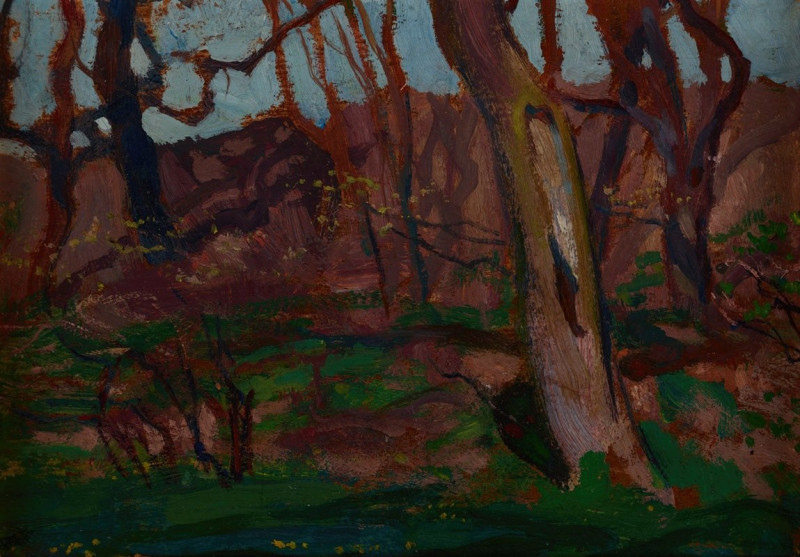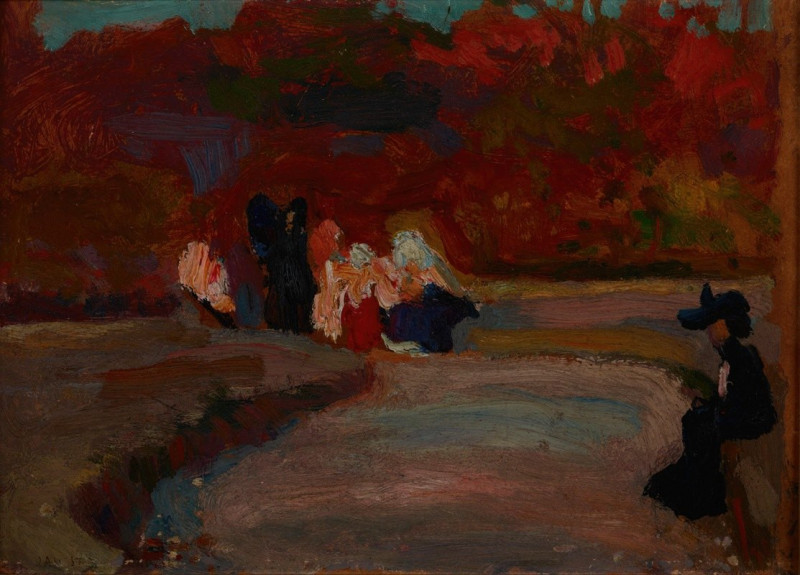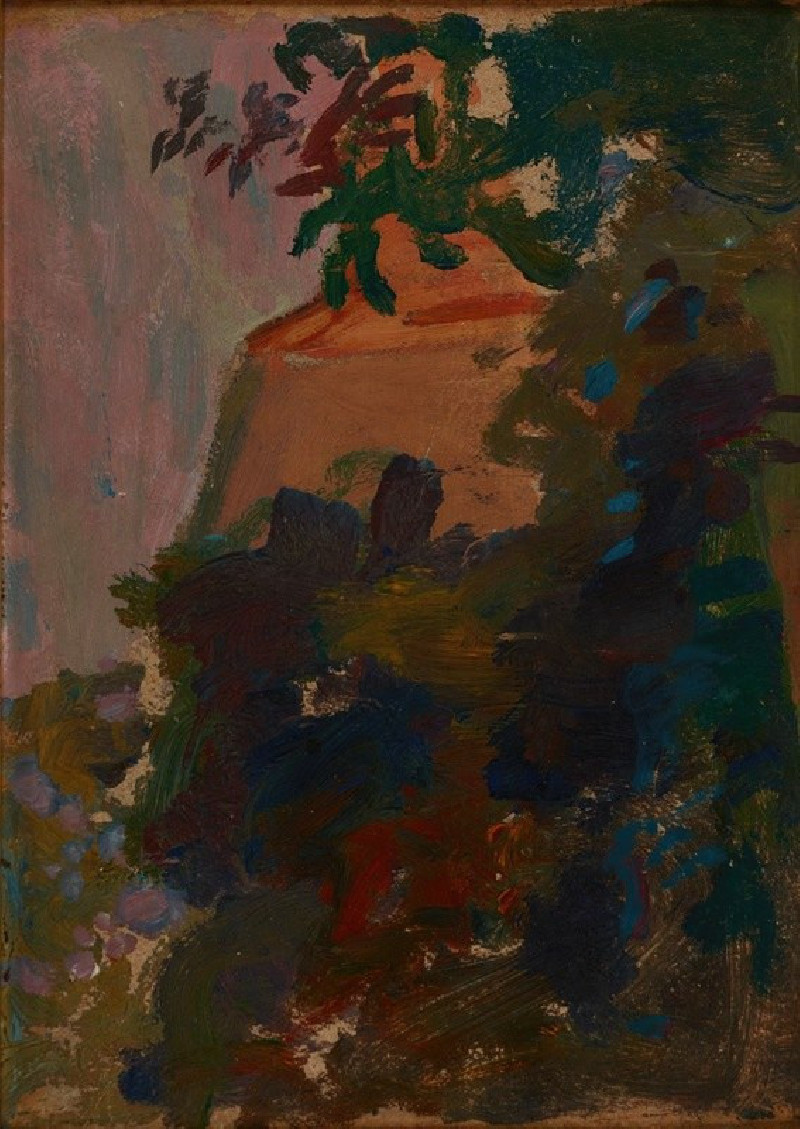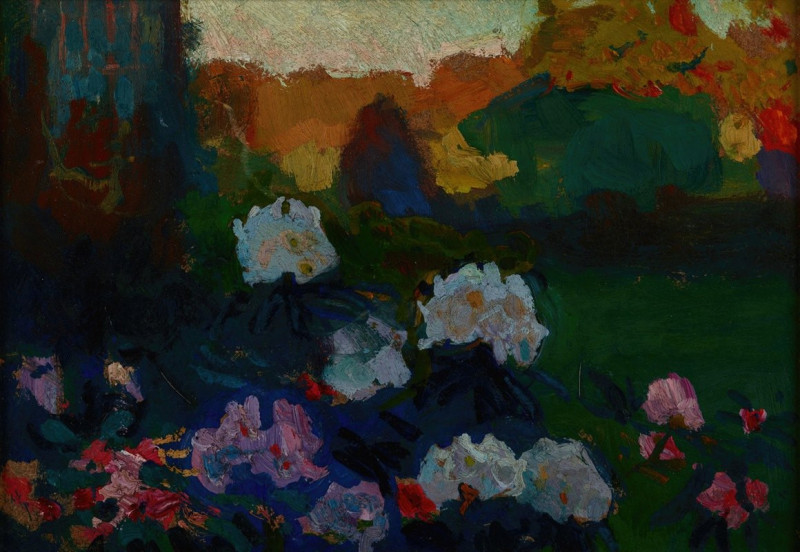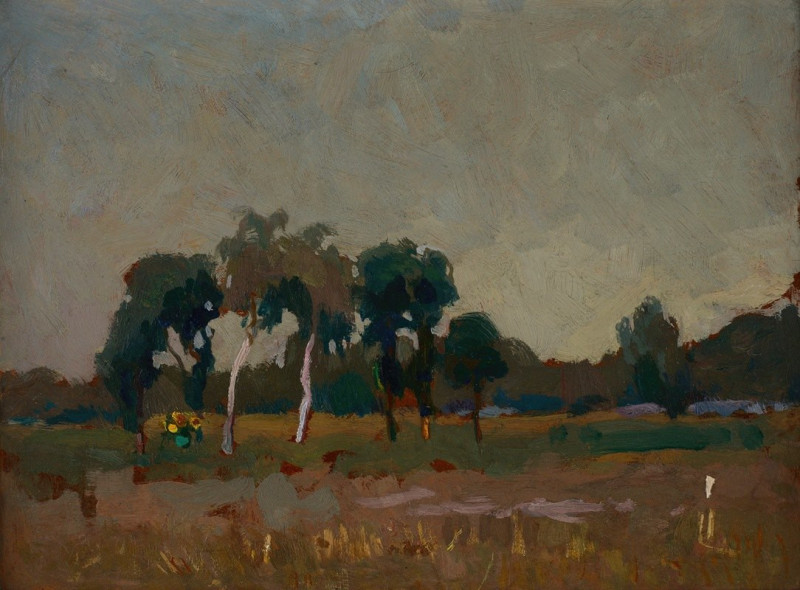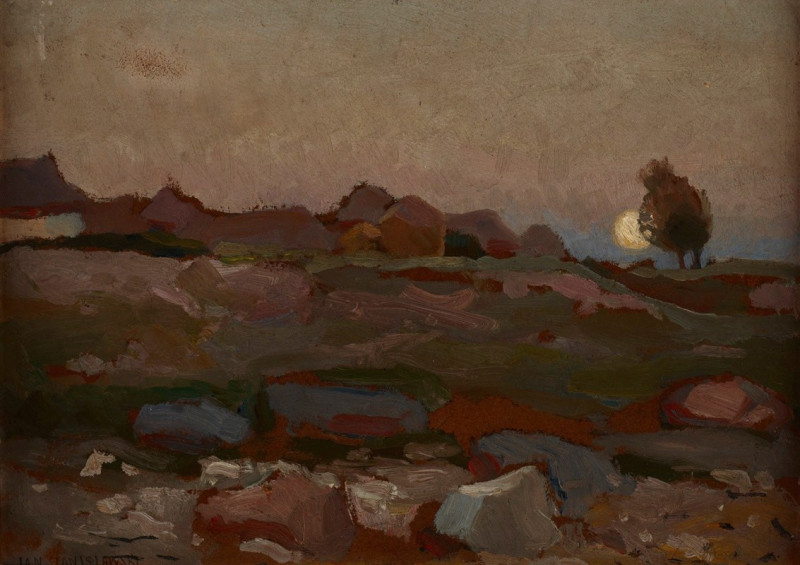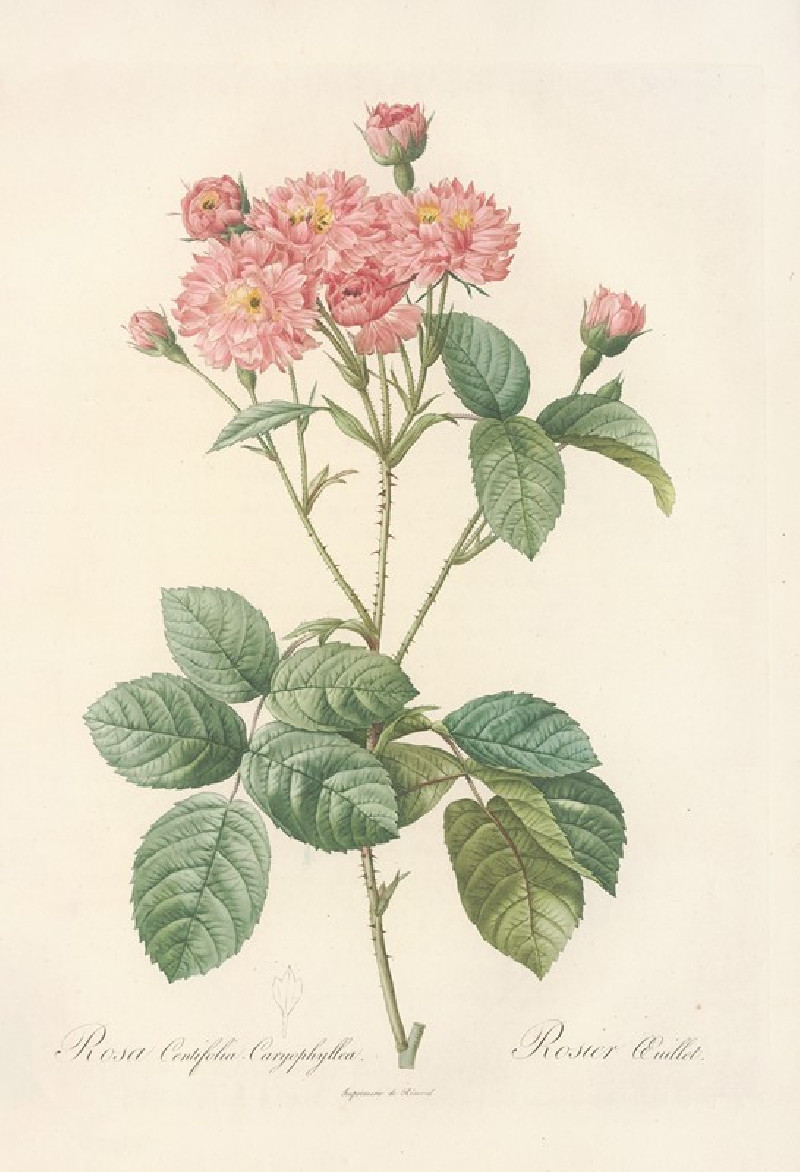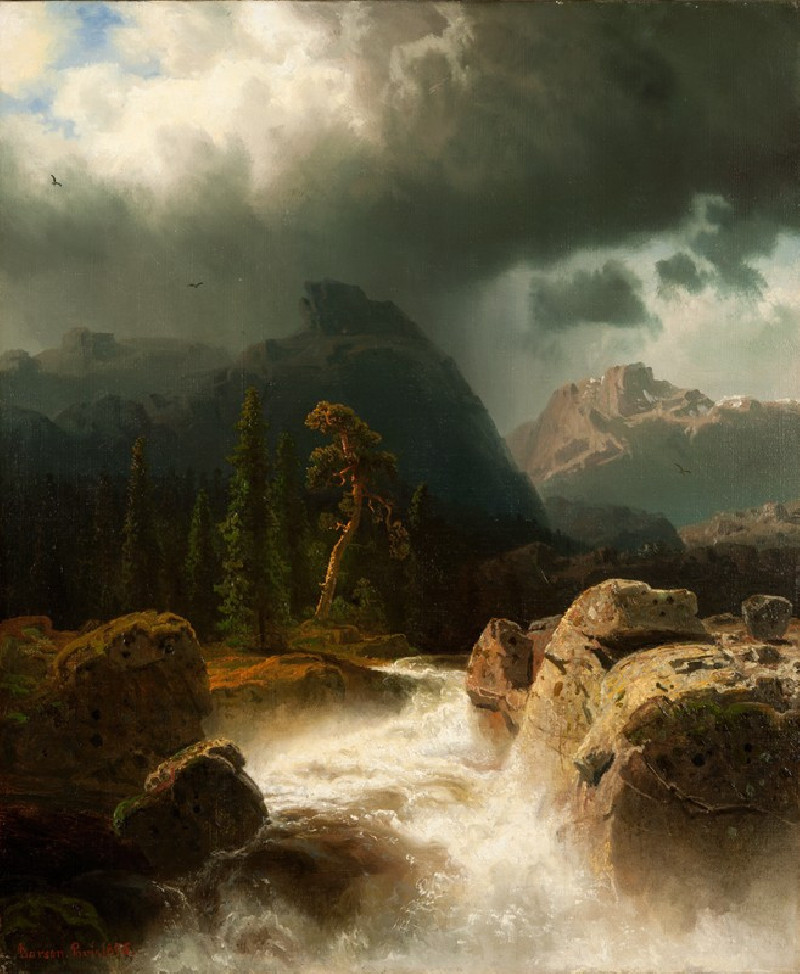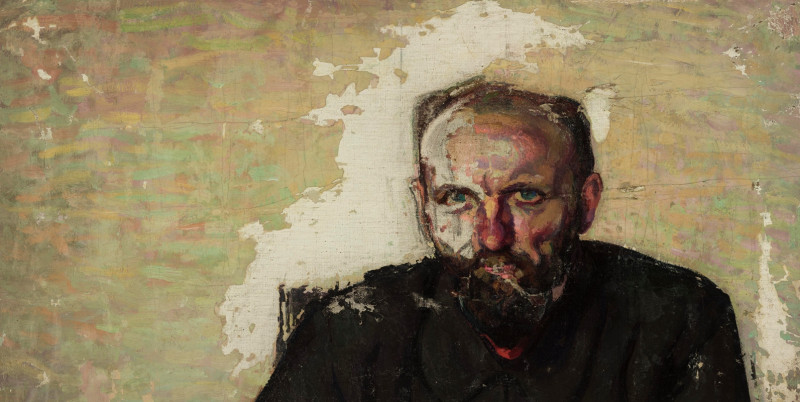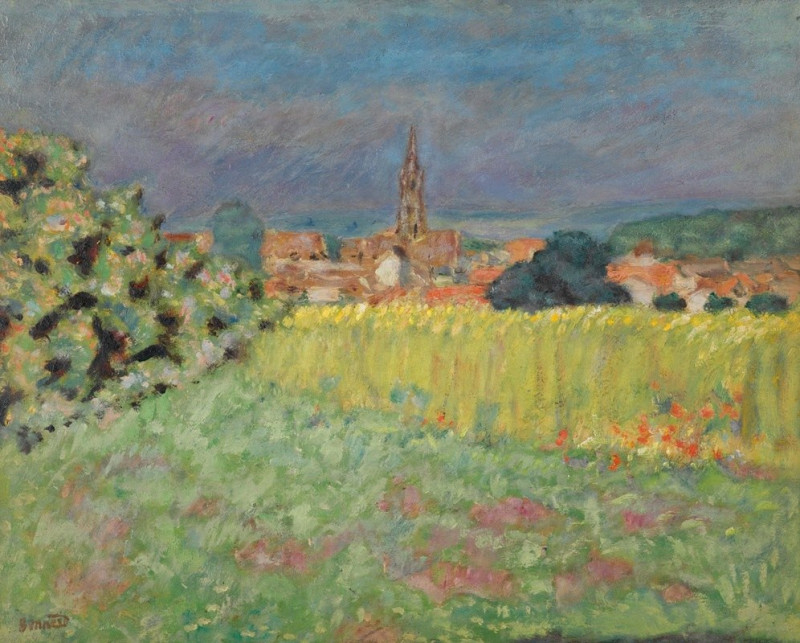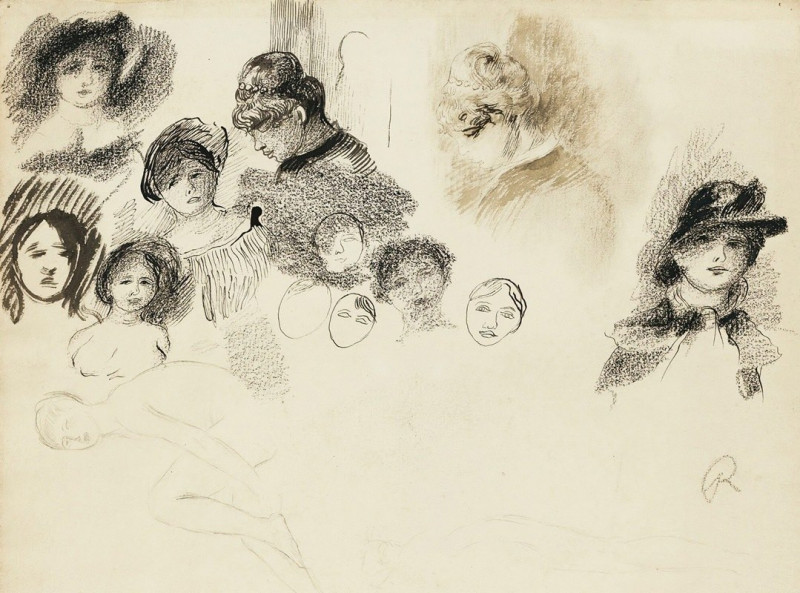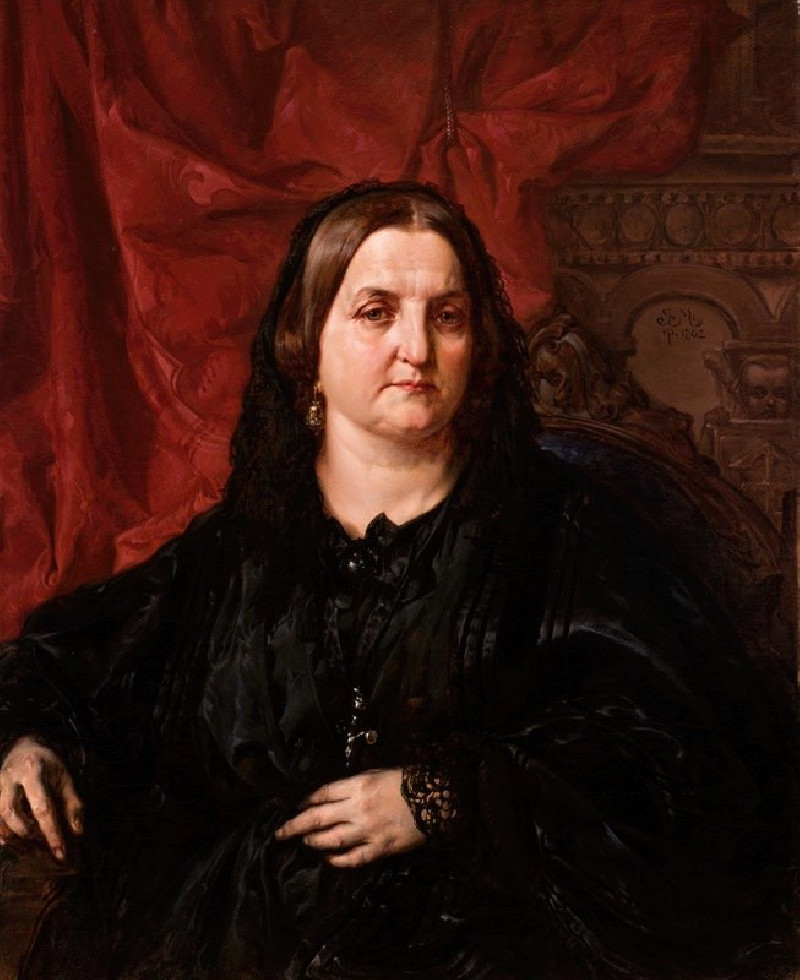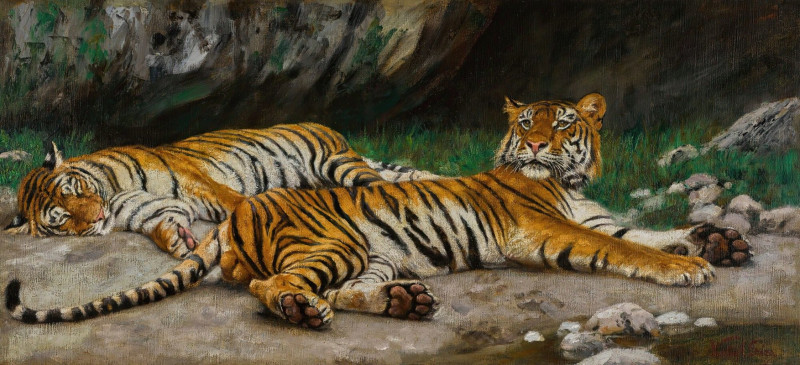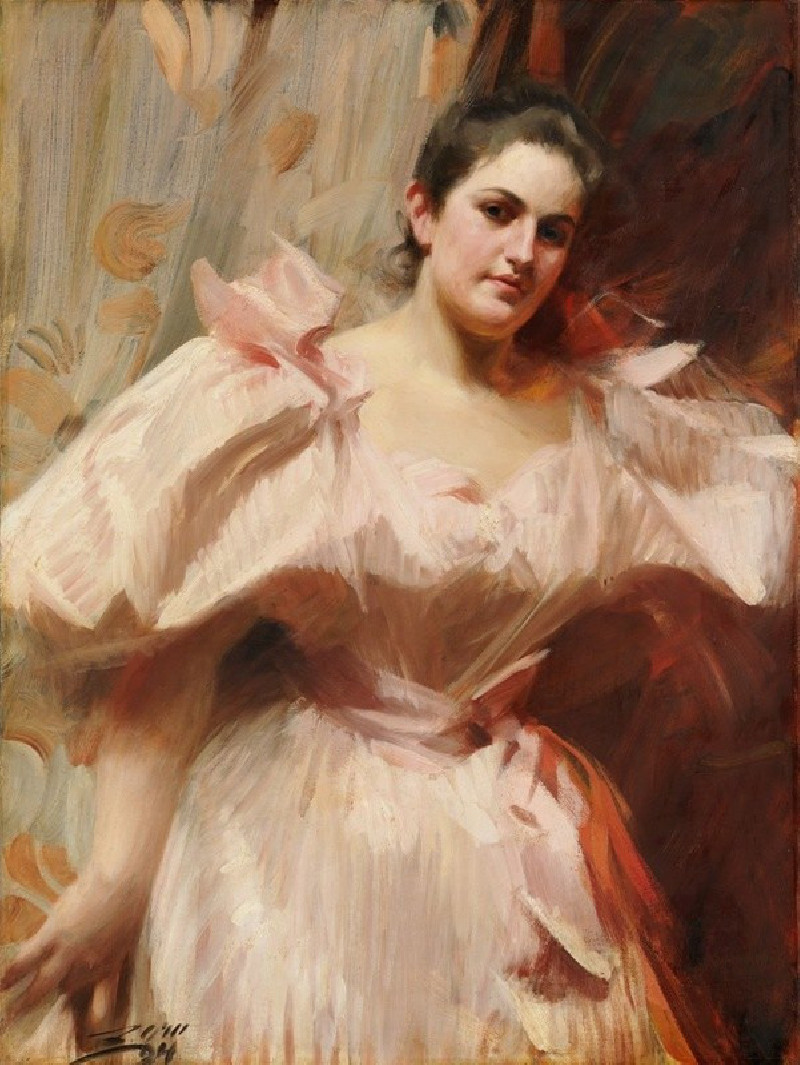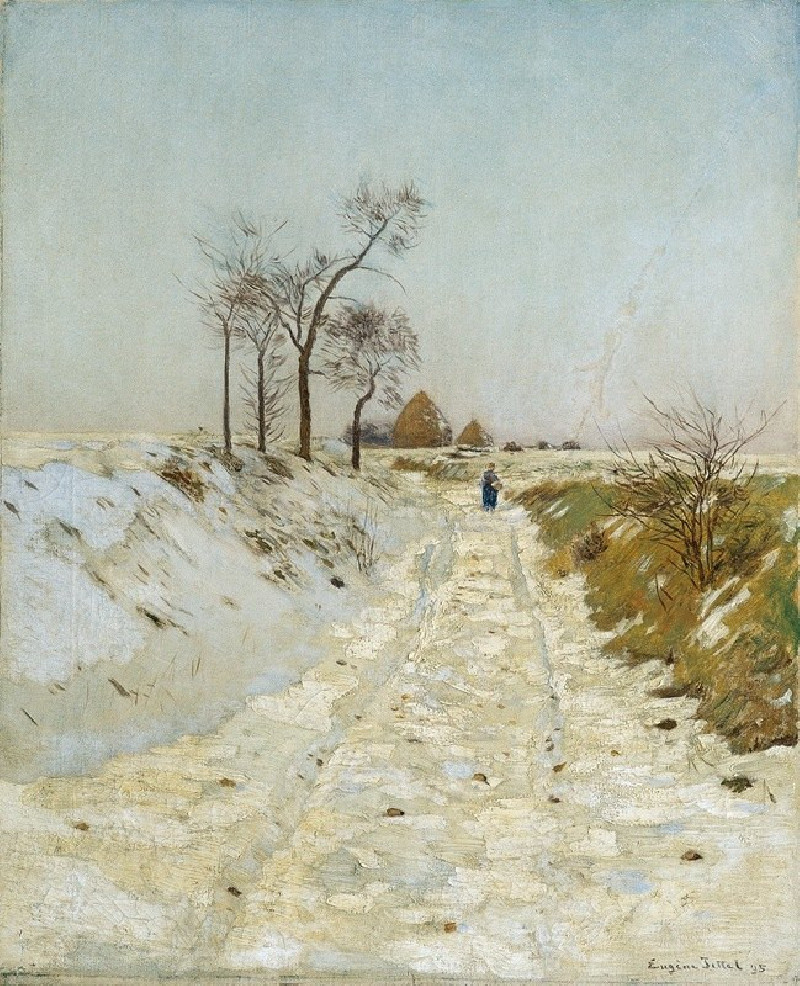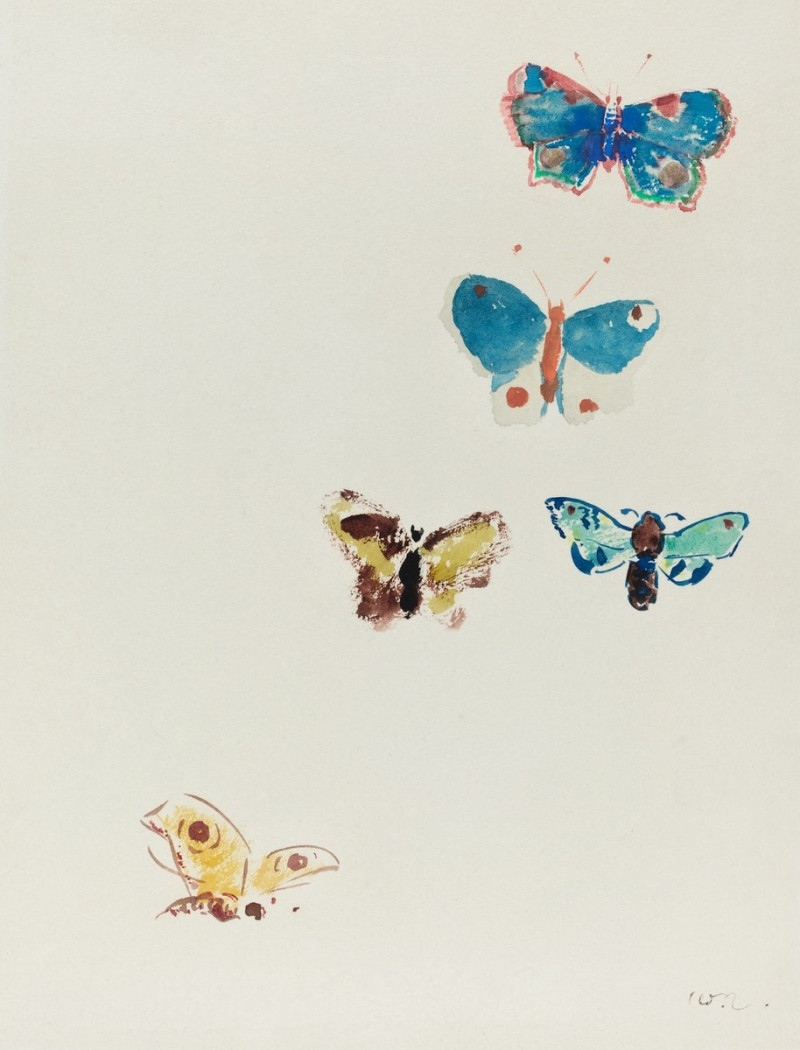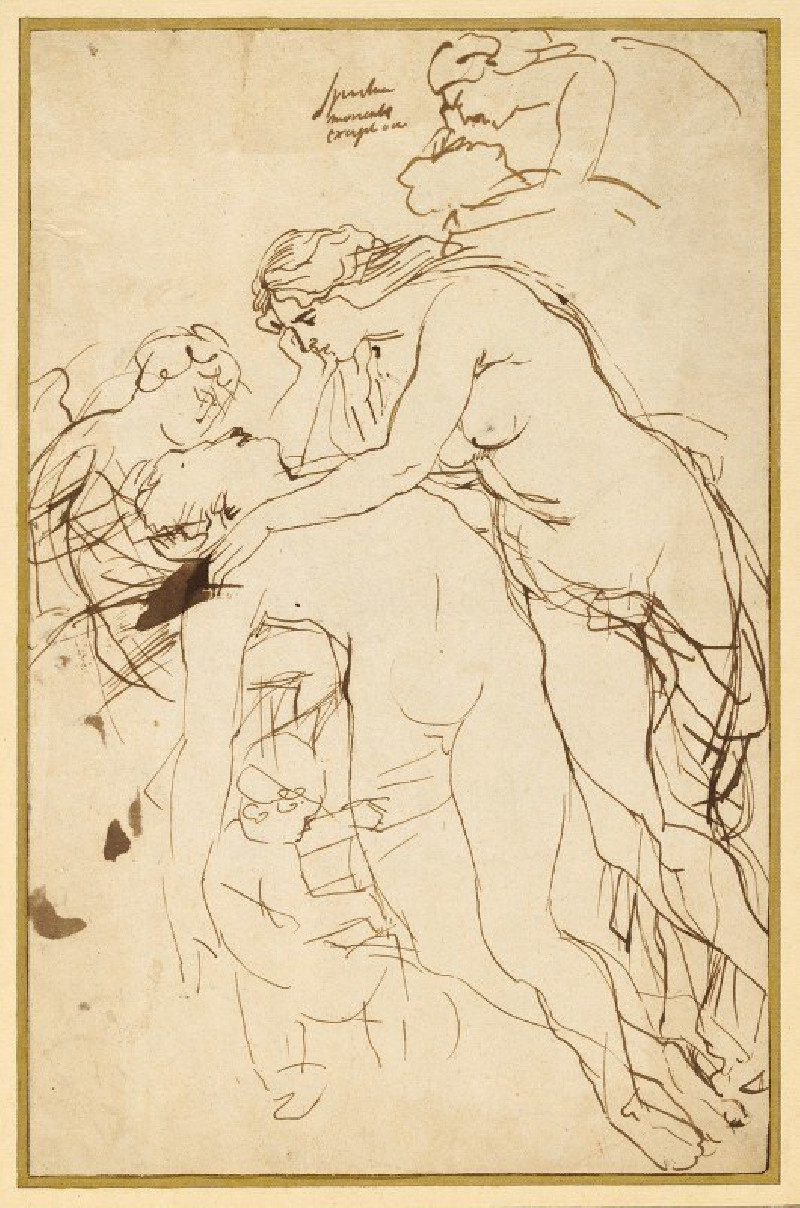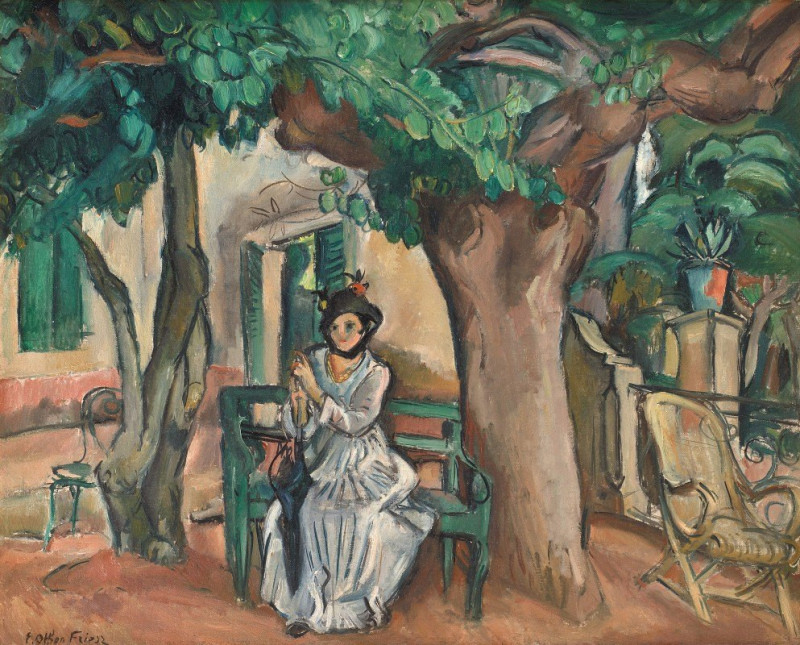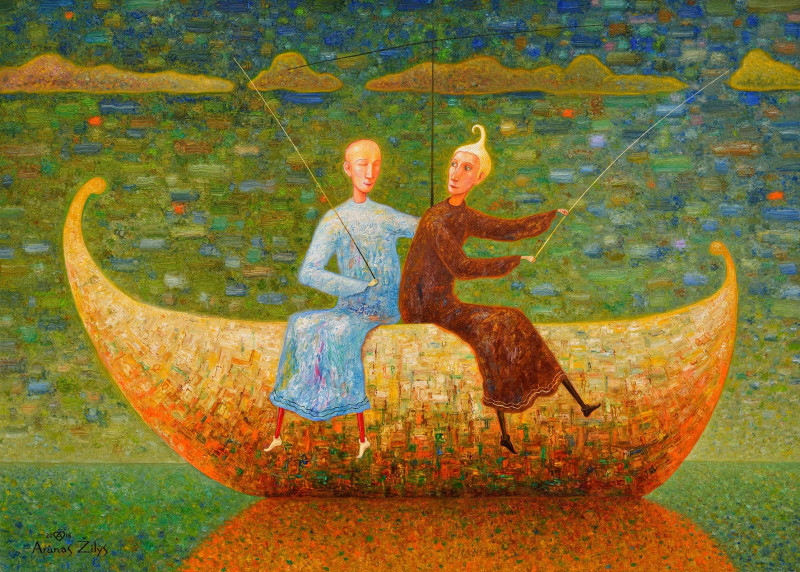Apple-Trees in Blossom (1903)
Technique: Giclée quality print
Recommended by our customers
More about this artwork
"Apple-Trees in Blossom" (1903) by Jan Stanislawski captures the serene beauty of an orchard in spring. The painting depicts a cluster of apple trees, their branches adorned with the delicate pink and white blossoms that herald the season's arrival. Stanislawski's use of bold and expressive brush strokes emphasizes the vibrancy and energy of natural growth, conveying not just the visual beauty of the scene but also the dynamic force of nature embodied within the blossoming trees.The artist's color palette, rich with greens, blues, and subtle hints of pink, interacts harmoniously to create a sense of depth and lushness in the landscape. The background, composed of sweeping strokes of blue sky and the textured whites of clouds, frames the trees and brings attention to their intricate forms and the explosion of bloom.This piece is a splendid example of Stanislawski's adeptness at capturing the essence of the landscape with emotion and nuance. The painting invites viewers to pause and appreciate the transient beauty of spring, encouraging a connection with the natural world.



